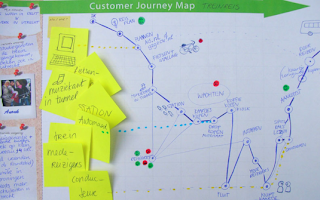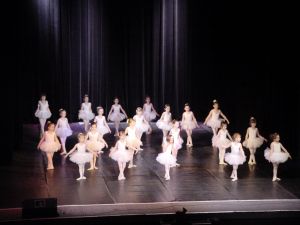Assignment three is based on observing others.
To get started we were asked to look at the website servicedesigntools.org and read through some of the examples of service design and the tools used in the process. I thought a few of the tools were very useful and I have even used them in my own projects. There were also other tools I liked and found interesting, I may try to use these in future projects. Before I explored the site for these tools the assignment recommended I had a look at ‘The Trainride’.
I interpreted ‘The Trainride’ to be a map of a person’s day. The subject would be observed throughout the day and their actions would be noted down onto a continuous path. The path will show who or what they have come into contact with and what they do. This tool will help designers design something relevant for that person as the designer will now have an idea of who the person they are designing for is and what they do on an average day. With this understanding designs will be better, a designer will know what needs to change and what can be kept the same. This is useful for all designers we should have a clear image of our client before we begin designing for them.
 |
| 'The Trainride' |
‘Group Sketching’ is a powerful tool. Before I saw it on the site I wouldn’t have really described it as a tool I think it’s something we all use without thinking about it. It’s described as a “quick, fast and economic tool for developing and explaining ideas simultaneously.” It’s said to be great for groups with different cultural and social backgrounds as it helps create a common understanding. I have used this in all my group projects it’s a good way to show someone else the image you have in your own head because sometimes words just don’t work! I found this particularly useful in my last project which was furniture design. A girl in our group was from Lithuania
‘Rough Prototyping’ “is a quick method to build prototypes using all the objects and materials available in that specific moment and location.” Again this is used to explain you’re ideas to others, this time through a model. We are encouraged in the studio to build maquettes during the development stages of out projects. I think it helps me gain a greater awareness of space and size when I do this for interior design. We are currently designing offices for SEPA and I am about to do some rough models of my ideas to see how they look in 3D form outside of my sketch book.
‘Affinity Diagram’ “a creative process used for gathering and organising large amounts of data, ideas and insights…” Write down the goal or problem then around this stick ideas written on post-it notes. Whilst doing so the group will be discussing the topic and be left with a wall of information that can be referred back to. I sometimes do this on my own when I’m not working on a group project. It’s a useful way to explore a subject and quickly jot down ideas before I forget. When you look back over the words you can see if any patterns have emerged, it’s a good quick way to keep record of what is being discussed.
A couple of the service design tools I liked but have never used were ‘Tomorrow Headlines’ and ‘Poster’.
The ‘Poster’ tool encourages designers to think of possible future promotional advertising for the service. It may help produce ideas for the design process along the way. It also creates a like between the design and the consumer. I would like to do this in a future project as creating an advertisement is useful when trying to connect with others. It may give a potential client a clearer understanding of the design.
‘Tomorrow Headlines’ “are fictional articles published on magazines or journals that the designers imagine by projecting themselves in the future and trying to understand what kind of impact the service will have on the society.” This should be done by every designer. Designers should always be forward thinking and take time to think about how the design will be received now and how changes in the future may affect it.
The Service Design Tools website was very useful. Even although I’m not doing service design there are a few techniques I can take away from it to apply to my own work. I also enjoyed the little icons by each tool…cute!
























